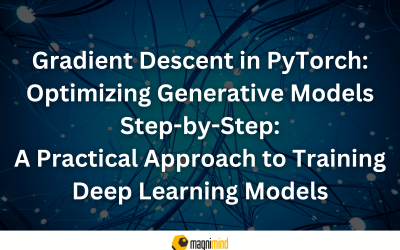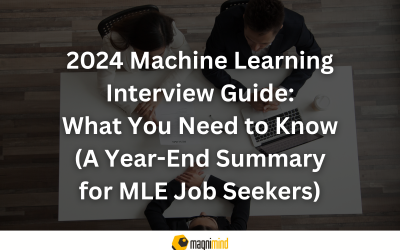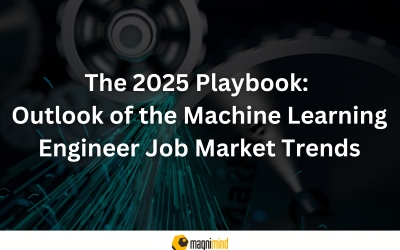With the advent of large language models (LLMs), such as GPT-4 and multiple other advanced AI frameworks, machines have changed the way they semantically write natural human-like text. Just behind these models is a powerful mechanism called attention that lets them process language better than ever before. This allows LLMs to place weight on how salient individual tokens are in an input sequence — a pivotal complexity predictor to help them model complex linguistic functionalities.
In this read, we will explore the detail of how the LLM attention mechanisms work, their importance, real-world applications, challenges, and future direction. By the time you’re done, you’ll understand why and how attention transforms AI from a simple pattern matcher into a sophisticated language processor.
Understanding the Foundation of Attention
ML attention mechanism is one of the revolutionary topic in the field of natural language processing (NLP). That was most famously put into wide use last year by a transformative model known as a Transformer, introduced in “Attention Is All You Need” (2017) by Vaswani et al. (2017) [1]. This is a revolutionary architecture in which the sequential processing seen in earlier architectures, e.g. with recurrent neural networks (RNN) and long short-term memory networks (LSTM), was discarded, and attention mechanisms were the only logical resolution to the sequential data.
Why This Matters?
While previous architectures like RNNs and LSTMs were effective, they were fundamentally limited in their ability to learn long-range dependencies and process sequence data efficiently. Sequential flow of information through a time step, which caused problems like:
- Information Loss: Important details from earlier parts of a sequence could get diluted or lost as the sequence length increased.
- Vanishing Gradients: The reliance on backpropagation through time often resulted in vanishing or exploding gradients, making it challenging to train deep models effectively.
- Slow Processing: Sequential computation meant these models couldn’t leverage the benefits of modern parallel hardware.
Transformers, leveraging attention mechanisms, overcame these challenges by revolutionizing how sequences of data were processed, leading to the unprecedented success of models like GPT and BERT [2]
Advantages of Attention-Driven Architectures
This transition to attention-based architectures allowed for multiple advantages such as:
- Handling Long-Range Dependencies:
Attention mechanisms allow models to pay attention to relationships between words or tokens regardless how far apart they are in the sequence. For example, in a paragraph whose story protagonist was introduced long before, attention makes sure that any references made to the protagonist later in the text are within context [3]. - Parallel Processing
In contrast to RNNs and LSTMs, Transformers factor the data in a serial format—modally one token at a time. These degrees of parallelism yield an order-of-magnitude speed-up in computation time, which leads to faster training (and inference) [4] - Task Flexibility:
This is a powerful basis for a host of NLP applications, from machine translation and text summarization, to sentiment analysis and conversational AI. For example, only minor adjustments are made to a single Transformer-based architecture for its successful adaptation to these tasks. [5] - Contextual Adaptation:
With attention, the model can dynamically learn to pay different amounts of attention to different parts of the context and different parts of the input depending on the conditions of the use case it is on, whether it requires more formal language, or particular jargon, or less formal, or different types of words, or chains of words. [6] - Scalability:
Large datasets are increasingly available, and attention mechanisms scale efficiently with the data. Consider the example of the Transformer architecture, which can process large amounts of text, using attention to capture even the subtle correlations spread over long passages of text [7].
What is Attention?
- Essentially, the core idea behind attention is to allow the model to focus on the most relevant segments out of the input sequence and reduce distractions from less important data. By focusing only on certain segments of data as required, the model learns contextual information, dependencies, and semantic subtleties that are vital for proficient language comprehension and generation [8].
- Attention is like a spotlight on a stage.
- When reading a sentence, the model directs its “spotlight” on the words or phrases most pertinent to the task, like understanding a question or translating a phrase.
- This spotlighting dynamically shifts as the model processes different parts of the input, ensuring context-sensitive analysis.
Breaking Down Attention with an Example
Think about it like the following task.
“The cat sat on the mat.”
The model needs to pay attention to relevant words in the context of the sentence, such as “sat” and “on,” while processing the word “cat,” if it is to understand the structure and meaning of the sentence. This mechanism operates through attention, which provides this dynamic focus, meaning the model is able to understand which words matter in the context of generating the appropriate translation[3].
However this mechanism will also ensure that less important words like the and on will have lower attention weights, as there will be far lesser information about the core meaning of the sentence in them. This allows the model to produce more accurate outputs by selectively concentrating on relevant terms [4].
Key Features of Attention:
- Dynamic Weighing of Input:
The attention part means assigning weights on different parts of the input based on their importance to the subsequent tokens. More relevant words or tokens to the task are given higher weights [9]. - Task-Specific Focus:
Depending on the objective, attention dynamically adapts its focus. For example:
- Attention dynamically shifts its focus based on the goal. For example:
It maps words (from source languages) to the corresponding words (from target languages) in the machine translated. Such types of words are useful in sentiment analysis to find sentiments related words(e.g; “excelent” or “terrible”) [10].
- Efficient Resource Allocation:
o Even the longest and most complex sequence can be effectively processed, by focusing on relevant information around it through attention mechanisms [11].
This simple realization about attention has become the cornerstone of the models that are built on top of that such as state-of-the-art Natural Language Processing (NLP) and self-attention which then get further synthesized into Transformer architectures. So let’s explore these concepts in more detail.
- Self-Attention: The Core Process
At their core, Transformer models make use of a self-attention (or intra-attention) mechanism. It allows every word in a sentence to reach out, in a sort of interactive way, and decide how much weight one word should give another. This is needed to build up context and relations over tokens in the natural way as it would for the previous set of tokens (even across long sequences. [12]
How Self-Attention Works
Several stages characterize the process of self-attention:
- Token Embeddings:
In the first step, we transform each word or token in the input into a numerical vector with an embedding layer. These vectors encapsulate different linguistic features like semantic meaning, syntactic roles, etc. - Query, Key, and Value Vectors (QKV):
For each token, the model produces three unique vectors using learned weight matrices:
Q = Query: The focused token
K (Key K): The token which is being compared against
Value (V): Represents the true information content of the token.
- Relevance Scores (Dot Product):
Just like in our previous example, to compute how important one token is to another, the model calculates a dot product between the Query vector and Key vector. This score is based on an index that scores how closely related the two tokens are [13]. - Softmax Normalization:
Apply softmax to the relevance scores to get the attention weights that sum to 1. These weights correspond to how much the model should attend to each token. - Weighted Sum:
Next, a weighted sum of these Value vectors is calculated for each token through the attention weights, producing contextual information-rich vectors for each token [14].
Example:
Consider the sentence:
The cat sat on the mat, which was black.”
Self-attention allows the model to discern that the word “black” refers to the word “cat”, not the word “mat”. The Query vector of “black” targets its relevant pair, Key vector of “cat,” with a high attention weight between them [15].
Such translation is crucial for enabling the model to understand longer sequences without losing track of the semantics over time, especially in such cases as transformations of very complex sentences or multi-clause sentences.
Scaled Dot-Product Attention
The attention mechanism has its set of challenges, one such challenge is that they use the dot product between the high-dimensional vectors, which can lead to large values thus causing instability during training. To do so, the dot product is scaled by dividing by the dimension of the Key vectors square rooted.
Why Scale the Dot Product?
- Prevents disproportionately large attention scores.
- Ensures more stable gradients, improving the training process.
Multi-Head Attention
One attention may look for syntax, while another looks for semantics within a sentence. But understanding language is often not as simple as picking a number based on a single nuance. To overcome this, multi-head attention uses multiple attention instances simultaneously [16].
How Multi-Head Attention Works
Parallel Attention Heads
The input pass through several attention heads with each head getting its own set of QKV (query, key and value) weight matrices. These heads work in isolation, attending to different linguistic aspects.
Diverse Focus Areas
A head learns a different part of the input space:
Head 1: May keep grammatical relationships.
Head 2: Can learn semantic meanings.
Head 3: Might focus on layout of text.
Concatenation and Linear Transformation
The outputs from all attention heads are concatenated and transformed through a linear layer, yielding a combined representation that captures multiple points of view[16].
Why Multi-Head Attention Matters
- Enhanced Contextual Understanding
This allows for richer and more nuanced representations because multi-head attention enables the model to focus on different parts of the input for each head. - Improved Model Performance
This diversity in focus allows the model to perform better across a wide range of NLP tasks.
By combining these mechanisms—self-attention, scaled dot-product attention, and multi-head attention—Transformer models achieve unparalleled ability to process and understand language with remarkable precision [16]
The Role of Attention in Large Language Models
Attention mechanisms are not just a technical innovation—they’re the key to the versatility and power of LLMs. Here’s why attention is indispensable:
- Handling Long-Range Dependencies
Traditional models like RNNs and LSTMs struggled with long-range dependencies, where the relationship between distant words was lost over time. Attention mechanisms solve this by allowing every token to attend to all others, regardless of their position in the sequence [17]. - Parallel Processing
Unlike sequential models, Transformers process entire sequences simultaneously. Self-attention enables this parallelism, significantly reducing training time and computational costs. - Contextual Understanding
Attention ensures that each word’s meaning is interpreted in context. For example, the word “bank” could mean a financial institution or the side of a river. Attention mechanisms ensure that the model identifies the correct meaning based on the surrounding context [18]. - Flexibility in Language Generation
Attention mechanisms are essential for generating coherent and contextually relevant responses in generative tasks like text completion, summarization, and machine translation.
Applications of Attention Mechanisms
- Machine Translation
Attention aligns source and target language tokens for accurate translation, even in long or complex sentences [17]. - Text Summarization
Attention highlights key phrases or sentences for effective summarization, retaining the essence of the text. - Question Answering
Attention helps focus on relevant parts of the passage to answer a given question correctly [19]. - Chatbots and Virtual Assistants
By analyzing the input context, attention helps conversational AI systems generate relevant and coherent responses. - Sentiment Analysis
Attention identifies sentiment-laden words to determine the overall tone of a text. - Named Entity Recognition (NER)
Attention mechanisms aid in identifying proper names and key phrases, such as organizations, locations, and dates.
Challenges of Attention Mechanisms
- Computational Complexity
As sequence length increases, the computational cost of attention grows quadratically, making handling long sequences computationally expensive [20]. - Bias Propagation
Biases in the training data can be amplified by attention mechanisms, which requires careful handling during training. - Interpretability
While attention weights provide insights into the model’s focus, they don’t always provide clear explanations for decisions [21]. - Memory Management
Managing memory efficiently is crucial when dealing with large datasets, and attention’s computational complexity can strain system resources.
Innovations Addressing Limitations
- Sparse Attention
Instead of attending to every token, sparse attention focuses only on a subset of tokens, reducing computational costs. - Memory-Efficient Transformers
Models like Longformer and Reformer improve efficiency for long sequences by leveraging techniques like local attention or reversible layers. [22] - Hybrid Architectures
Combining attention mechanisms with other techniques (e.g., CNNs) can offer better performance for specific tasks.
The Future of Attention Mechanisms
The future of attention mechanisms lies in making them more efficient, interpretable, and adaptable. Key areas of development include:
- Efficiency
Researchers are developing ways to reduce the computational demands of attention, enabling faster and more resource-efficient models. - Interpretability
Enhancing attention alignment resilience will make it easier for researchers and practitioners alike to understand the decisions being made. - Ethical AI
As attention mechanisms are introduced in the real world, fairness and bias mitigation will be of utmost importance. - Cross-Modal Attention
After that, attention mechanics being adapted to several data types is also discussed for multimodal tasks.
Conclusion
So this attention mechanism is undoubtedly the backbone of large language models as we know them and has reshaped the field of natural language processing (NLP) — changing the way we think about how machines process and generate text. Attention mechanisms have allowed AI to better understand and emulate human language, by enabling models to selectively focus on the parts of an input sequence that are most salient. It is the introduction of self-attention, another fundamental component, and multi-head attention we will go into later, that brought NLP in this case models like GPT and BERT into the limelight and have equipped them to carry out multitude of tasks ranging from but not limited to translation, summarisation, question answering with stunningly high degree of accuracy and efficiency.
The key differences between attention mechanisms and earlier architectures like RNNs and LSTMs are the parallelizability, attention to long-range dependencies, and the ability to dynamically adjust attention based on context. This achieved greater computational efficiency but also released greater versatility and scalability in AI systems.
Attention mechanisms will continue to evolve as research in this area progresses. However, not without challenge, as we will see innovations that address today’s hurdles, from computational complexity to interpretability, and ethical treatment of AI. These sophisticated tasks based on sophistication in understanding and generation mean that AI systems strove to achieve greater depths on many performance levels in increasingly more human (and aligned) ways.
By doing so, you will ensure that the future of the AI will be innovative, impactful and the attention mechanisms will play the key role in pushing the boundaries of AI.
References:
- Vaswani, A., Shazeer, N., Parmar, N., Uszkoreit, J., Jones, L., Gomez, A. A., Kaiser, Ł., & Polosukhin, I. (2017). Attention Is All You Need. arXiv. Retrieved from https://arxiv.org/abs/1706.03762
- Radford, A., Narasimhan, K., Salimans, T., & Sutskever, I. (2018). Improving Language Understanding by Generative Pre-Training. OpenAI. Retrieved from https://openai.com/research/language-unsupervised
- Jian, J., Chen, L., Ke, L., Dou, B., Zhang, C., Feng, H., Zhu, Y., Qiu, H., Zhang, B., & Wei, G. (2024). A Review of Transformers in Drug Discovery and Beyond. Journal of Pharmaceutical Analysis. https://doi.org/10.1016/j.jpha.2024.101081
- Palanichamy, N., & Trojovský, P. (2024). Overview and Challenges of Machine Translation for Contextually Appropriate Translations. iScience, 27(10), 110878. https://doi.org/10.1016/j.isci.2024.110878
- Zhang, E. Y., Cheok, A. D., Pan, Z., Cai, J., & Yan, Y. (2023). From Turing to Transformers: A Comprehensive Review and Tutorial on the Evolution and Applications of Generative Transformer Models. Sci, 5(4), 46. https://doi.org/10.3390/sci5040046
- Devlin, J., Chang, M. W., Lee, K., & Toutanova, K. (2018). BERT: Pre-training of Deep Bidirectional Transformers for Language Understanding. arXiv. Retrieved from https://arxiv.org/abs/1810.04805
- Brown, T. B., Mann, B., Ryder, N., Subbiah, M., Kaplan, J., Dhariwal, P., Neelakantan, A., Shinn, J., Wu, A., & Amodei, D. (2020). Language Models Are Few-Shot Learners. arXiv. Retrieved from https://arxiv.org/abs/2005.14165
- Cao, K., Zhang, T., & Huang, J. (2024). Advanced Hybrid LSTM-Transformer Architecture for Real-Time Multi-Task Prediction in Engineering Systems. Scientific Reports, 14. https://www.researchgate.net/publication/378554891_Advanced_hybrid_LSTM-transformer_architecture_for_real-time_multi-task_prediction_in_engineering_systems
- Hu, D. (2020). An Introductory Survey on Attention Mechanisms in NLP Problems. In Advances in Computer Science and Technology. https://www.researchgate.net/publication/335382554_An_Introductory_Survey_on_Attention_Mechanisms_in_NLP_Problem
- Vtiya, A. (2024). 50 Questions About Text Classification and Transformers. Medium. Retrieved from https://vtiya.medium.com/50-questions-about-text-classification-and-transformers-afa410d572e2
- Tang, H., Tan, S., & Cheng, X. (2009). A Survey on Sentiment Detection of Reviews. Expert Systems with Applications, 36, 10760–10773. https://doi.org/10.1016/j.eswa.2009.02.063
- Averma, A. (2024). Self-Attention Mechanism Transformers. Medium. Retrieved from https://medium.com/@averma9838/self-attention-mechanism-transformers-41d1afea46cf
- Liu, Y., Ott, M., Goyal, N., Du, J., McCann, B., & Reimers, N. (2019). RoBERTa: A Robustly Optimized BERT Pretraining Approach. arXiv. Retrieved from https://arxiv.org/abs/1907.11692
- A Survey on Transformers in NLP with Focus on Efficiency. https://arxiv.org/html/2406.16893v1
- StackExchange. (2024). What Exactly Are Keys, Queries, and Values in Attention Mechanism? Retrieved from https://stats.stackexchange.com/questions/421935/what-exactly-are-keys-queries-and-values-in-attention-mechanism
- Bahdanau, D., Cho, K., & Bengio, Y. (2015). Neural Machine Translation by Jointly Learning to Align and Translate. arXiv. Retrieved from https://arxiv.org/abs/1409.0473
- Clark, K., Khandelwal, U., Levy, O., & Manning, C. D. (2019). What Does BERT Look At? An Analysis of BERT’s Attention. arXiv. Retrieved from https://arxiv.org/abs/1906.04341
- Rae, J. W., et al. (2020). Compressive Transformers for Long-Range Sequence Modeling. arXiv. Retrieved from https://arxiv.org/abs/1911.05507
- Beltagy, I., Peters, M. E., & Cohan, A. (2020). Longformer: The Long-Document Transformer. arXiv. Retrieved from https://arxiv.org/abs/2004.05150
- Kitaev, N., Kaiser, Ł., & Levskaya, A. (2020). Reformer: The Efficient Transformer. arXiv. Retrieved from https://arxiv.org/abs/2001.04451
- Lu, J., et al. (2019). VilBERT: Pretraining Task-Agnostic Visiolinguistic Representations for Vision-and-Language Tasks. arXiv. Retrieved from https://arxiv.org/abs/1908.02265
- Fournier, Quentin & Caron, Gaétan & Aloise, Daniel. (2023). A Practical Survey on Faster and Lighter Transformers. ACM Computing Surveys. 55. 10.1145/3586074. https://www.researchgate.net/publication/369016670_A_Practical_Survey_on_Faster_and_Lighter_Transformers



